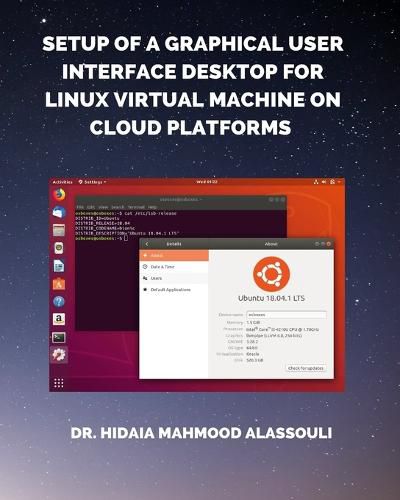Readings Newsletter
Become a Readings Member to make your shopping experience even easier.
Sign in or sign up for free!
You’re not far away from qualifying for FREE standard shipping within Australia
You’ve qualified for FREE standard shipping within Australia
The cart is loading…






This title is printed to order. This book may have been self-published. If so, we cannot guarantee the quality of the content. In the main most books will have gone through the editing process however some may not. We therefore suggest that you be aware of this before ordering this book. If in doubt check either the author or publisher’s details as we are unable to accept any returns unless they are faulty. Please contact us if you have any questions.
Cloud Platforms provide VM images in the Linux OS as well. Linux has always been operated via terminal or shell through a keyboard and a terminal. Even with GUIs around, Linux continues to be operated from the shell. Linux VMs are also operated from the command line of your desktop via an SSH (secure shell) connection. They do not have a desktop environment or GUI installed by default. For Windows users migrating to Linux, a desktop environment would be more convenient to operate. Hence, various desktop environments can be set up on a Linux VM. Mostly we need to have Graphical User Interface GUI on the Linux Virtual Machine instance and to use Internet browser on it. This report will talk about the steps to install minimum required User Interface on VM (virtual machine) with Web Browser. We will work on installing a desktop environment on a Linux Virtual Machine on different Cloud Platforms. The book consists from the following sections: 1. Generating SSH key for auto log in to Linux server. 2. Creating Google Cloud Linux Virtual Machine. 3. Logon to the Linux Virtual Machine 4. Installing VNC server. 5. Installing XRDP server. 6. Installing a Graphical User Interface (GUI) for Linux Google Cloud instance and connecting to the server through VNC or RDP connection. 7. Quick guide to create a Linux virtual machine in Cloudsigma. 8. Quick guide to create a Linux Virtual Machine in the Microsoft Azure portal. 9. Quick guide to create a Linux Virtual Machine in Amazon AWS.
$9.00 standard shipping within Australia
FREE standard shipping within Australia for orders over $100.00
Express & International shipping calculated at checkout
This title is printed to order. This book may have been self-published. If so, we cannot guarantee the quality of the content. In the main most books will have gone through the editing process however some may not. We therefore suggest that you be aware of this before ordering this book. If in doubt check either the author or publisher’s details as we are unable to accept any returns unless they are faulty. Please contact us if you have any questions.
Cloud Platforms provide VM images in the Linux OS as well. Linux has always been operated via terminal or shell through a keyboard and a terminal. Even with GUIs around, Linux continues to be operated from the shell. Linux VMs are also operated from the command line of your desktop via an SSH (secure shell) connection. They do not have a desktop environment or GUI installed by default. For Windows users migrating to Linux, a desktop environment would be more convenient to operate. Hence, various desktop environments can be set up on a Linux VM. Mostly we need to have Graphical User Interface GUI on the Linux Virtual Machine instance and to use Internet browser on it. This report will talk about the steps to install minimum required User Interface on VM (virtual machine) with Web Browser. We will work on installing a desktop environment on a Linux Virtual Machine on different Cloud Platforms. The book consists from the following sections: 1. Generating SSH key for auto log in to Linux server. 2. Creating Google Cloud Linux Virtual Machine. 3. Logon to the Linux Virtual Machine 4. Installing VNC server. 5. Installing XRDP server. 6. Installing a Graphical User Interface (GUI) for Linux Google Cloud instance and connecting to the server through VNC or RDP connection. 7. Quick guide to create a Linux virtual machine in Cloudsigma. 8. Quick guide to create a Linux Virtual Machine in the Microsoft Azure portal. 9. Quick guide to create a Linux Virtual Machine in Amazon AWS.